Hi!
I have been slowly working on building out a new room in my basement for practicing/recording drums.
It's been a slow process, that has thus far involved removing water heaters, and breaking up the concrete floor to re-route the water main so that I have a relatively unobstructed floor space to work with.
I have about 8' 4" from floor to the bottom of the ceiling joists, and about 11 1/2' x 14' of space to work with.
As a side note, the rest of the basement is finished, and the lovely wife isn't wild about me tearing that stuff apart as I do my build.
I have started beefing up the existing subfloor above my space using 'rods method' of adding two layers of 5/8 drywall between the joists, with green glue, and then battening them into place with 1x2.
My plan is to build the 'room in a room' and have a new "inner ceiling" supported by the new framing I build.
In the picture attached you can see what I have going on thus far.
My questions are:
In the attached picture, you can see a space (labeled A). On the other side of that is the brick veneer of my home.
If I seal that area up with drywall and acoustic sealant, am I essentially creating a small 3-leaf system once I have my drum rooms walls built? Should I fill that cavity with layers of drywall? just insulation? Or is it such a small space that I shouldn't be fretting about three leaves?
Also, Above this ceiling is our 'formal' dining room (not used much).
In the space labeled "B" you can see the ductwork feeding the vents in that dining room.
Keeping in mind that I AM going to be building that decoupled "inner" ceiling, what should I do about that duct and vent feeding the dining room?
Comments
Jason Morris, post: 461504, member: 51197 wrote: I think I'm goi
Jason Morris, post: 461504, member: 51197 wrote: I think I'm going to have to go with either straddles or superchunks in each corner, including the wall to ceiling corners. I'm leaning towards superchunks. I know they are more costly than a straddle type corner trap, but I have a lot of the mineral wool already, and the stuff I am using is easily available to me, so I don't mind the expense.
Yeah those soffit traps eat space for breakfast. Glad you considered it tho.
The straddle traps are cheaper, but, the big consideration is they are more effective at absorbing bass. This is because standard fluffy insulation is better at bass absorption than rigid, due to a more optimal GFR. (Gas Flow Resistivity)
Did you order rigid or limp mineral wool batts?
Either way both trap styles are good and it wont make or break your build, especially since your adding so many. But if LF absorbsion is to be maxxed, straddeled is the way to go. Ive seen super chunk style where they cut fluffy batts into triangles and incorporated them in the bottom and top quarters of the trap, since bass builds up most in trihedral, 3 way corner junctions.
Jason Morris, post: 461504, member: 51197 wrote: Considering my 8' ceilings (which are still considered 'too low' for good drum sounds) should I cover the entire ceiling with mineral wool? If so, should I then cover that with plastic sheeting to recover some of the mids and highs?
Floor is going to remain reflective of course.
.
8' ceilings in a drum booth can sound good.
Id cover the area over the kit without question, and probably no plastic.
Id most likely cover the entire ceiling as well, probably no plastic.
It might make sense asthetically to leave the perimeter of the ceiling untreated or not, depending on how it meets up with your ceiling bass traps.
Off the top if my head, i tend to default to completely covered ceiling or 85% covered. No plastic (unless fiber dust concerns you. For me personally id cover in thin plastic for that reason. You can get like .3 mil (3 mil?) Plastic sheathing in a roll for cheap. Its in a big box like aluminum foil or wax paper. The effect of plastic is IMHO, much exaggerated as far as the real world. Cover your speaker in with some plastic wrap or a shopping bag, stand a few feet away and see how little it matters. Ive done this alot.
That said your cymbals probably dont need any HF reflections back into the mics.
Either way i think the difference is negligible. Even spaced slats dont liven things up as much as it looks like they would, ftom my experiences at least.
For ceiling id use 2" rigid with a 2" airspace. 4" rigid with a 2" airspace if youve got the headroom. Or use a 1" airspace. The 4" rigid gets you alot of absorbsion in the low mids. Your ceiling approaches becoming a huge bass trap with 4" and a 2" airspace. 6-8" rigid makes a true bass trap, but 4 with space is damn good considering its the entire ceiling.
That said, even 2" with no airspace will give you good broadband absorbersion. Low ceiling reflections generally arent useful. They are acceptable tho, just not directkt over the kit.
The cave's drum room has 10' ceilings and 3- 2'x4' panels (2" rigid) with i forget how much air space behind them, maybe 6".
Jason Morris, post: 461504, member: 51197 wrote: My concern is that as a drummer I don't want the room TOO dead. But I also wonder if "totally dead" is the best option for a room as small as mine.
You can add as you go. I like totally dead around the kit, then less as you move away from it.
Totally dead can be cool. But i was surprised at how decent the drums sounded in the cave booth, which was only like 8x10 and 8 ft tall. It had 2x4' panels along the walls and an almost bare ceiling. I tacked a couple small scrap foam peices to the ceiling, but it was mostly bare. Each wall and ceiling was splayed tho. We started tracking vocals and amps before i installed ceiling treatment, and it sounded good so i never finished it.
Perhaps i could have improved it more? Cant say, but the splayed ceiling is what i attribute to not 'needing' ceiling treatment.
Jason Morris, post: 461504, member: 51197 wrote: would spending time creating REW files be worthwhile in a live room? or is that more useful for control rooms?
It could be interesting. Id say its most useful if youve got some funny rings your trying to pinpoint. Other than that its more for general interest.
With tracking rooms you can move the mics and kit around to optimize the sound. And your shooting for flattering, not flat. This is why measurement is more 'mandatory' in control rooms, where listening position and speakers have less wiggle room.
I'll attach some screenshots from the triad site. I have much better photos in the chaos of my drives and cloud, but youll get the point.
Drums are in the main room, booths are the booths. The control room window gives perspective of the layout.
Here's one of the tracks i recorded in the booth. 5 mics, and i
Here's one of the tracks i recorded in the booth. 5 mics, and i think the door was shut, some of the songs we left it open partially and had a room mic. No samples, no mastering. I could probably do a better mix now but in 2012 thats how it came out that day. Yamaha kit.
[MEDIA=audio]https://recording.o…
Attached files Lefty_-_Where_I_GO(EP_version) Mp3.mp3 (4.8 MB)
Oh yeah, the wiggly wall. If you like the look then sure. I jus
Oh yeah, the wiggly wall. If you like the look then sure. I just worry about unpredictable angles in a small room. The wiggles arent going to greatly effect the efficiency of trap to any big degree. They could slightly improve or worsen the mids and highs.
Id opt either a convex shape like a barrel, or a slanted (splayed) wall. I like the splay because its got a predictable reflection pattern, and a continuously deepening bass absorption, from shallow side to deeper side.
Ill post screenshots from normandy. You see the slat wall on the side of the drums is splayed in two directions! We called it the williy wonka wall. Lol no right angles at Normandy. Quite the test of my carpentry skills and sanity. The mis-cut pile wasnt too big. Each board had a slightly longer lenght then its neighbor. ( i didn't frame the wall or sheetrock it, but refinished the interior treatment from bare wall)
The kit in the main room, which doesn't show up well in the pic, is in front of a convex wall.
The window wall of the booth is also splayed in 2 directions.
Again sorry for the lame screenshots. Traidrecording.com is the site.
Eventually i hope to post/publish the build diary of the two studios.
I think after seeing the finished product, id prefer visually if the slats were horizontally rather than up and down.
kmetal, post: 461507, member: 37533 wrote: The straddle traps ar
kmetal, post: 461507, member: 37533 wrote: The straddle traps are cheaper, but, the big consideration is they are more effective at absorbing bass. This is because standard fluffy insulation is better at bass absorption than rigid, due to a more optimal GFR. (Gas Flow Resistivity)
Do you have any links to articles providing more detail about that? I'm not doubting you, but I have read conflicting comments about that and I am not sure what to believe.
I think I read where one of the guys from GIK acoustics said fluffy insulation was better at absorbing bass, but only when it was like 18" thick!
The specs for the Fire and sound batts, and what I saw regarding absorption coefficients on Bob Golds website seem to indicate that the mineral wool is better than the fluffy stuff for the depths I am willing to go. Im not wedded to the idea. I have plenty of fluffy insulation left over too. I just want to do what is going to work the best.
kmetal, post: 461507, member: 37533 wrote: Did you order rigid or limp mineral wool batts?
I guess it's technically rigid? I think its more medium density than high density though. the specs are posted above, but I dont know if they tell you what you are looking for?
kmetal, post: 461507, member: 37533 wrote: Or use a 1" airspace.
The stuff I have is 3", which I guess would leave like a 1/2" airspace if I went with the plan of placing the batts into the cavities of my inside out ceiling.
kmetal, post: 461509, member: 37533 wrote: Oh yeah, the wiggly w
kmetal, post: 461509, member: 37533 wrote: Oh yeah, the wiggly wall. If you like the look then sure. I just worry about unpredictable angles in a small room.
I do like the look of it, and I was more interested in the varying depths of said wiggly wall than breaking up the reflections.
My wife likes the look of it as well, which is a plus. :D
BUT functionality would trump aesthetics.
I had initially planned on having wood slats on all of the walls. I think during my investigation I determined that might not be the best idea.
What are your thoughts? Use them? leave them out entirely? or just use a few, spaced far apart so as to be aesthetically pleasing but not have much affect on the acoustics?
Jason Morris, post: 461510, member: 51197 wrote: Do you have any
Jason Morris, post: 461510, member: 51197 wrote: Do you have any links to articles providing more detail about that?
I should have may evidence if im going to make statements like that. A corner trap would fairly easily reach 18" depth from front face to corner. But i was talking from memory. I think studio tips had some info on it, and i am pretty sure GS had the thread i was thinking of. I think the thread were Eric Desart introduces the superchunk, there is test data. Originally on studiotips which is defunct i think, but still acessable. There's a gross amount on GFR, but there was one about the super chunk with fluffy.
The only firm reference i can surely think of is Rods bass designs in the book often use a rigid front with fluffy. If there was something better Rod would use that. His methods arent always cheapest, but i generally believe are most effective and cost effecient. It may have something to do with the fact that the fluffy is being ysed behind a rigif panel. Or it may just be that the rigid panel gives a clean fininsh look and is resistant to bumps and pokes.
I will look around to try and find that info, but i guess i would have call my statement conjecture until i provide proof. Although rods book is i guess some sort of proof. Normany employed rigid with fluffy behind it in the control room, and fluffy only in the booths. Again not trying to wiggle out of firm proof of my claim.
Jason Morris, post: 461510, member: 51197 wrote: I guess it's technically rigid? I think its more medium density than high density though. the specs are posted above, but I dont know if they tell you what you are looking for?
Its it the consistency of styrofoam roughly? If you hold it up flat does it maintain is form or flap around.
It would probably say "rigid mineral wool" on the package.
Jason Morris, post: 461511, member: 51197 wrote: I had initially planned on having wood slats on all of the walls. I think during my investigation I determined that might not be the best idea.
What are your thoughts? Use them? leave them out entirely? or just use a few, spaced far apart so as to be aesthetically pleasing but not have much affect on the acoustics?
Hey man if you like the wiggly go for it.
Id err dead around the kit. Then id probably add slats in sections. Maybe angle them away from the kit and or towards absorption areas. My biggest purpose for slats is for selectively absorbing bass frequencies. Like the 60 or 125hz boom in your room. They also look cool, but they are also very common. Ive been playing around with squiggly strips of plywood, as an idea for my next studio.
You could maybe add slats just to your bass traps in the corners. You could also do the wall you look at when playing the kit with slats, and a curtian for variable liveness but consistently tuned trapping. Id probably be looking at something that with a couple slat sections on each side. Something about slats on the wall/ceiling traps looks good in my minds eye. It might help add visual seperatation and highlight the cool angle of the super chunk.
I am alot less afraid of reflection than i used to be when i first got interested in acoustics. In regular rooms reflections are often nasty so it gives the impression that live is bad. Well designed rooms that are lively are a different animal.
Id honestly kill around the kit and do the ceiling and bass traps. Then id experiment with different amounts and locations of absorbsion. When it was good, id then do the slats, tuning them to the room mode. Then make sure the room still had the right level of life/death and cover it all up with fabric.
I was surprised to hear how much trial and error and listening (a novel concept) rod used in the powerstation. They just kept adding laquer coats till it sounded right. Ditto for normandy live room. The normandy control room was rebuilt 3 times from '78 to like '86 till it was amazing. Then i redid it in 2012 making some slight changes.
Im still trying to find the proof, but you can also do a super c
Im still trying to find the proof, but you can also do a super chunk style but with fluffy. Theres alot of comments that say less dense insulation is for bass traps, but like my comment, dont include a data sheet.
This is as close as ive gotten. Andre (Avare) doesn't supply a data sheet, but he id very very knowledgeable and well respected.
Ive only seen him incorrect once when rod presented a data sheet on the Noise Reduction of a wall with steel vs wood. Ive read hundreds or more of andres posts.
Im gonna keep diggin, but id feel personally comfy stopping right there and using fluffy to fill the cavity. Its my nuerosis that wants the data sheet.
kmetal, post: 461512, member: 37533 wrote: I should have may evi
kmetal, post: 461512, member: 37533 wrote: I should have may evidence if im going to make statements like that.
No worries man. I hope you know I wasn't trying to call you out. I'm just looking to find consensus among the various people I look to on the inter webs for. guidance. :)
Besides, it occurred to me I have both. I can just try them a. couple different ways and see how things go.
kmetal, post: 461512, member: 37533 wrote: The only firm reference i can surely think of is Rods bass designs in the book often use a rigid front with fluffy.
I need to crack it open again. I need to re-read his acoustics chapter.
kmetal, post: 461512, member: 37533 wrote: If you hold it up flat does it maintain is form or flap around.
It's floppy.
On a isolation related note...
I did as you suggested a few posts back and ran a sine (and saw) wave thru a speaker in my drum room and checked the levels 3 feet from the door with an SPL meter.
I tried to hit 100db in the drum room, and when I stepped back out side that room, with both doors closed I was getting readings at the noise floor level of the house, which, granted is not great. (about 54db)
UNTIL I hit that 30hz tone. Then I was hitting around 90db in the drum room and 72 right outside the door.
Glen and Andre both advocating fluffy. https://www.gearslutz.co
Glen and Andre both advocating fluffy.
Ugh. I hope i dont have to go on a three week rabbit hole dive for a test sheet! Or worse re-read 87 pages on GFR that will go over my head still. Ahhh the joys of obsessive thinking....
kmetal, post: 461513, member: 37533 wrote: This is as close as i
kmetal, post: 461513, member: 37533 wrote: This is as close as ive gotten. Andre (Avare) doesn't supply a data sheet, but he id very very knowledgeable and well respected.
Ahh that's a good find! Thanks man. I will try the light 'n fluffy and see how that goes! I have a ton of it left!
Jason Morris, post: 461514, member: 51197 wrote: No worries man.
Jason Morris, post: 461514, member: 51197 wrote: No worries man. I hope you know I wasn't trying to call you out.
Oh totally dude. Im from Massachusetts i sound angry even when saying "this is awsome!"
No offense at all. I was just trying to aknowledge my claim unsubstantiated.
Besides its def ok to call me out, or anyone for that matter. Acoustic threads are full of myths.
Jason Morris, post: 461514, member: 51197 wrote: It's floppy.
I made my first panels ever from that stuff and they were kinda lumpy looking when covered with fabric, fine behind slats.
Jason Morris, post: 461514, member: 51197 wrote: I tried to hit 100db in the drum room, and when I stepped back out side that room, with both doors closed I was getting readings at the noise floor level of the house, which, granted is not great. (about 54db)
UNTIL I hit that 30hz tone. Then I was hitting around 90db in the drum room and 72 right outside the door.
Nice work testing. So isolation is solid, and 30hz is the resonant frequency of the walls... Also the resonant frequency of the AC. Im pretty sure more mass is the only way to lower the resonant frequency.
That missing section of the outer leaf near the garage may be the culprit. It might be leaking that frequency.
I meant to comment on how nice the pffft sound was in your vid, when you opened the door. Its a sign they are sealed up well.
kmetal, post: 461518, member: 37533 wrote: That missing section
kmetal, post: 461518, member: 37533 wrote: That missing section of the outer leaf near the garage may be the culprit. It might be leaking that frequency.
Yeah I hope so! That is getting dealt with tomorrow!
kmetal, post: 461518, member: 37533 wrote: I meant to comment on how nice the pffft sound was in your vid, when you opened the door. Its a sign they are sealed up well.
Awesome! Sometimes I don't even know for sure how well I did something, so its good to hear! :D
On the isolation- Have you entered your room dimensions into a
On the isolation-
Have you entered your room dimensions into a mode calc? Im wondering if the fundamental is also around 30hz or 60hz or 125hz.
I like these tools for easy and quick.
Not sure if this helps or not. I have only fiddled with REW a li
Not sure if this helps or not. I have only fiddled with REW a little bit, but from what I can see it looks like the room mode is more around 45. I didnt really test that with a sine wave though.
I went from 60 (which seemed fine) to 30 which gave me the crummier reading.
Its good that the room modes arent also 30 or 60 im pretty sure
Its good that the room modes arent also 30 or 60 im pretty sure that would make things worse. It is also good to know that 45hz is a peak, since a kick drums fundamental is usually around 50hz. So if theres excessive boom or thinness in the kick you know the drum or mic is in a hot or cold spot. Overall 20db swings in a pretty untreated room that size is not bad at all. If you tune your resonators to 80 or a 100hz youll catch the 2nd harmonic (2nd peak after the lowest 45hz) and broadband bass traps will smooth the rest.
Its good to not see any weird peaks at gross frequencies like 4k.
Im not an expert or even intermediate at chart analysis.
Isolation-
If both leafs are the same thickness and mass, they will have the same resonance frequency. This is why with windows you use one pane thats thicker than the other. If that new wall section doesn't do the trick, it may be worth considering and additional drywall layer if the current isolation isnt acceptable. Especially if the leaves are the same.
The resonant frequency cuts thru the wall like a hot knife cuts butter. When you have different resonant frequencies for each it makes the two leaf system more effecient.
The other thing is a larger airspace between the leaves, which you wouldnt change now. But up to 4" of air space increases low frequency attenuation. After 4" theres diminishing returns.
kmetal, post: 461524, member: 37533 wrote: Its good to not see a
kmetal, post: 461524, member: 37533 wrote: Its good to not see any weird peaks at gross frequencies like 4k
The REW file only shows 30-500hz. I'll attach the whole graph here. FYI, I did this measurement at 80hz.
kmetal, post: 461524, member: 37533 wrote: If that new wall section doesn't do the trick, it may be worth considering and additional drywall layer if the current isolation isnt acceptable. Especially if the leaves are the same.
I guess that's the tough part of an inside-out design. Tough to add an additional layer. Unless I go between the joists, I guess. I'll give that some thought.
kmetal, post: 461524, member: 37533 wrote: But up to 4" of air space increases low frequency attenuation. After 4" theres diminishing returns.
There is a minimum of a 4" airpsace between all of the leaves. More in some spots.
Jason Morris, post: 461525, member: 51197 wrote: I guess that's
Jason Morris, post: 461525, member: 51197 wrote: I guess that's the tough part of an inside-out design. Tough to add an additional layer. Unless I go between the joists, I guess. I'll give that some thought.
Just fyi it doesnt matter which leaf you add mass to, as long as their different. Not sure if the outer leaf is more acessable than the inner leaf.
Nothing looks crazy on the graph. Good luck with the wall section build.
Thanks! Was just considering something... My current plan for t
Thanks!
Was just considering something... My current plan for the next set of silencers (inlet) is to mount each to the leaf they are servicing and coupling them together with thick neoprene rubber.
Last time I was able to mount the silencer servicing the inner leaf to concrete. This time I think it will have to be attached to the studs of my inner wall and/or ceiling.
I "think" thats ok, since it's technically supposed to be part of that leaf.. but considering the inside-out design, the silencer will be 3 1/2" from the inner leaf sheathing. I guess this is adding another leaf?
I wonder if thats going to be problematic.
I wonder if it would be better to just use a single silencer on the oustide leaf with a big beefy duct that penetrates both leaves. Of course they would be caulked to high heaven, and would not be in physical contact with the inner leaf.. but I dunno. One way I am using half as many silencers, and the other way I am introducing another leaf, even though it is pretty small comparatively.
what you think?
Jason Morris, post: 461533, member: 51197 wrote: Was just consid
Jason Morris, post: 461533, member: 51197 wrote: Was just considering something... My current plan for the next set of silencers (inlet) is to mount each to the leaf they are servicing and coupling them together with thick neoprene rubber.
Last time I was able to mount the silencer servicing the inner leaf to concrete. This time I think it will have to be attached to the studs of my inner wall and/or ceiling.
I "think" thats ok, since it's technically supposed to be part of that leaf.. but considering the inside-out design, the silencer will be 3 1/2" from the inner leaf sheathing. I guess this is adding another leaf?
I wonder if thats going to be problematic.
Im having a bit of a hard time visualizing this. If you couple things id be certain to use a qualified iso bracket. The risc clips from pac international have variations of clips and diagrams for mounting all sorts of stuff. Garage door openers, ducting ect.
In the book theres a diagram of an "exhange chamber" where ducting penetrates both leaves. Id try to follow that as closesly as possible.
I know rod mentioned at one point that the powerstation actually had a couple areas of 3 leafs cuz they couldn't get around it any other way. He said you live with what you have to.
Jason Morris, post: 461533, member: 51197 wrote: I wonder if it would be better to just use a single silencer on the oustide leaf with a big beefy duct that penetrates both leaves. Of course they would be caulked to high heaven, and would not be in physical contact with the inner leaf.. but I dunno. One way I am using half as many silencers, and the other way I am introducing another leaf, even though it is pretty small comparatively.
Still cant picture the 3rd leaf mentally. But it seems to me it would be better to avoid it if you can simply keep the air flow quiet without resorting to the third leaf.
Is it possible to mount the stuff on the concrete wall near the garage entry area? Or ceiling with iso mounts?
I appologize i dont have grear answers in the hvac area, im gonna have to pony up and learn that area much better.
One thing that comes to mind is if your planning on more ducting or whatever for the new ac, maybe this is more reason to try not initially adding a third leaf right away.
To be honest, im sure sure that a third leaf always reduces isolation, or if its just much worse than a two leaf of similar mass. Maybe it varies case by case.
Just fyi- if im MIA the next couple days its cuz ive some stuff to handle over here. Ill check in often as possible.
kmetal, post: 461534, member: 37533 wrote: Is it possible to mou
kmetal, post: 461534, member: 37533 wrote: Is it possible to mount the stuff on the concrete wall near the garage entry area? Or ceiling with iso mounts?
For the silencer on the outer leaf I can do that. For the inner leaf, I cannot.
I know on the Johnsayers website the typical way of doing silencers these days is to have one silencer for each penetration.. so one on the inner and one on the outer leaf.
It IS possible to do a single silencer on the outer leaf, but apparently, you don't get as much isolation that way.
I've been trying to do whatever I can to get the best isolation possible, so I have operated on the assumption that I will do two silencers.
In any case, we didnt get that far last night. We built a new wall, and I got one layer of drywall on it.
Just doing that did seem to help the low-frequency isolation.
The 30hz buzz is about 2 db less than it was. Hopefully, things will be even better after I get another 2 layers of drywall up.
I also ordered some ISO pads for my AC unit. right now it is sitting right on the concrete pad. If that improves things another 1-2db I should be in pretty good shape. (hopefully)
We also got the wiggly wall framed. That's looking pretty good.
Plans for this weekend are putting in some lighting and running another 1 or 2 electrical outlets along that wiggly wall.
Then maybe experimenting with different types of insulation for bass trapping. :)
kmetal, post: 461534, member: 37533 wrote: Just fyi- if im MIA the next couple days its cuz ive some stuff to handle over here. Ill check in often as possible.
I hope the stuff you have to handle isn't too unpleasant! Thanks again for your advice!
Jason Morris, post: 461538, member: 51197 wrote: For the silence
Jason Morris, post: 461538, member: 51197 wrote: For the silencer on the outer leaf I can do that. For the inner leaf, I cannot.
I know on the Johnsayers website the typical way of doing silencers these days is to have one silencer for each penetration.. so one on the inner and one on the outer leaf.
It IS possible to do a single silencer on the outer leaf, but apparently, you don't get as much isolation that way.
I've been trying to do whatever I can to get the best isolation possible, so I have operated on the assumption that I will do two silencers.
If thats the accepted method by Sayers or Stewart, or people as reliable, i dont see any issue with it. Ive not looked into silencers and their application so im flying blind in that realm. Got more to learn.
Im not sure if iso mount brackets are necessary or not for the silencers, but id check.
Jason Morris, post: 461538, member: 51197 wrote: In any case, we didnt get that far last night. We built a new wall, and I got one layer of drywall on it.
Just doing that did seem to help the low-frequency isolation.
The 30hz buzz is about 2 db less than it was. Hopefully, things will be even better after I get another 2 layers of drywall up.
Nice! 2db at such a low frequency is not shabby. It will be interesting to see how the other layers add to the isolation.
Jason Morris, post: 461538, member: 51197 wrote: I also ordered some ISO pads for my AC unit. right now it is sitting right on the concrete pad. If that improves things another 1-2db I should be in pretty good shape. (hopefully)
Nice. I hope that solves it. I think the next step would be isolation products for the lines, or for the mounting hardware connected to the house.
Jason Morris, post: 461538, member: 51197 wrote: We also got the wiggly wall framed. That's looking pretty good.
Plans for this weekend are putting in some lighting and running another 1 or 2 electrical outlets along that wiggly wall.
Then maybe experimenting with different types of insulation for bass trapping.
Starting to get closer to the fun parts. Id consider at least 2 outlets. Its way easier put them in now.
Jason Morris, post: 461538, member: 51197 wrote: I hope the stuff you have to handle isn't too unpleasant! Thanks again for your advice!
No prob, this build has been enjoyable to watch. Fortunately im just clearing stuff out for the water meter installer, so nothing to crazy over here.
Busy weekend. Got the electric for the wiggly wall run, and put
Busy weekend. Got the electric for the wiggly wall run, and put up some track lighting.
Framed three corner traps, as well as much of the ceiling to wall corner traps.
Im using the fluffy pink stuff in the traps. R-30. I'm not sure if I am packing them too full or not?
Looking good man. Im itchy just from the pics. I bet it sounds
Looking good man. Im itchy just from the pics. I bet it sounds drastically different in there.
Jason Morris, post: 461559, member: 51197 wrote: I'm not sure if I am packing them too full or not?
The ideal is the insulation has no compression.
It looks like you peeled the kraft paper off, is that what you did?
awesome! So, I'm thinking of fabric next.. Trying to decide if I
awesome!
So, I'm thinking of fabric next.. Trying to decide if I want to just go to the fabric store and buy burlap or just get the Guilford of main stuff.
Anyone have any idea how the quality of the Guilford of Main SONA stuff is? is it basically just fire-rated burlap?
Jason Morris, post: 461564, member: 51197 wrote: awesome! So, I'
Jason Morris, post: 461564, member: 51197 wrote: awesome!
So, I'm thinking of fabric next.. Trying to decide if I want to just go to the fabric store and buy burlap or just get the Guilford of main stuff.Anyone have any idea how the quality of the Guilford of Main SONA stuff is? is it basically just fire-rated burlap?
Im not sure if it was SONA but we used Guilford fabric at the wave cave. Yes its just fire treated burlap, but, it is a high quality burlap. The burlap from the fabric store is sorta stringy, and fuzzy, and generally cheap feeling and looking.
I used a type called muslin for my home studio panels and was happy with it. I also was happy with cheap burlap behind the slat resonators.
At Normandy (Tony the owner) just picked out some fabrics he liked at a local discount fabric shop. He made sure they were breathable.
The one area worth mentioning is fire treatment. You can get fire treatment spray online, and you have to treat both sides of the fabric. Its cheaper to diy the spray than get pre treated fabric.
The reason i mention fire treatment is because it can void your insurance policy if there is not properly treated fabric, and you ever have to make an insurance claim. Insurance companies salivate at these opportunities to not cover the cleint.
So, after doing 3 corner traps and about 40% of the ceiling-to-w
So, after doing 3 corner traps and about 40% of the ceiling-to-wall corner traps I decided to take a REW measurement to see (visually) what the trapping was doing.
I don't really know what I am looking at, but it seems to be doing SOMETHING. :D
I included the new REW graphs at 10-22k AND 10-500hz.. Not sure if the 10-500hz is really useful or not, but thought zooming in to see more detail at the lower end of things might be handy.
I also included the overlay of the room before I did the corner traps.
What you think?
Here are a couple of waterfalls I created. I don't really know
Here are a couple of waterfalls I created.
I don't really know exactly what I am looking at, but I think they are showing things cleaned up quite a bit in the low end, and also the decay times in the meds and highs have been shortened quite a bit.
Which is to be expected with all that insulation I have on the walls.
Pretty remarkable difference in the low end though.
Jason Morris, post: 461573, member: 51197 wrote: Here are a coup
Jason Morris, post: 461573, member: 51197 wrote: Here are a couple of waterfalls I created.
I don't really know exactly what I am looking at, but I think they are showing things cleaned up quite a bit in the low end, and also the decay times in the meds and highs have been shortened quite a bit.
Which is to be expected with all that insulation I have on the walls.Pretty remarkable difference in the low end though.
Yeah, that 80hz would have hurt your mixes.. Good for you !
It looks like an improvement. The waterfalls show some lingerin
It looks like an improvement. The waterfalls show some lingering decays at 50hz and below, and the octave above it, 100hz.
On the impulse charts the dip at 60hz is a concern since the kick drums center frequency is usually between 40-60hz.
If you tune your resonators to 80hz you should get some improvement at 60hz and 100hz as well. This should smooth things out well for your kit. The lingering junk below 50hz would really be tough to attack due to space limitations of the room. Most stuff below 40hz gets cut out anyway with a hpf during tracking or mixing, so i wouldn't be overly concerned.
Overall things look good to me. Its nice to not see any nasty peaks in the liw mids or odd rings in the upper spectrum. And the decay is pretty uniform throughout the useful range.
Since this is a tracking room you can manipulate the sound with drum and mic location. If the 60hz is still a problem after you add slats (if your planning to) then you can always make a tuned panel trap to hit the 60hz band exclusively.
Overall things seem to be shaping up nicely. One thing phil (greene) told me when using frequency sweeps, was to sweep from low to high to test the mids and highs, and high to low for testing the bass.
Hows the isolation? Any better with the new wall and insulation?
kmetal, post: 461581, member: 37533 wrote: The waterfalls show s
kmetal, post: 461581, member: 37533 wrote: The waterfalls show some lingering decays at 50hz and below, and the octave above it, 100hz.
Yeah, hopefully the stuff around 100 will be tamed some more when I finish with the bass trapping. I only have about half the ceiling-to-wall corner traps done, so there is still room for improvment.
kmetal, post: 461581, member: 37533 wrote: Most stuff below 40hz gets cut out anyway with a hpf during tracking or mixing, so i wouldn't be overly concerned.
I was not real hopeful that I could do much to deal with stuff that low. I just dont have enough space in my room to build traps that would deal with those frequencies.
kmetal, post: 461581, member: 37533 wrote: One thing phil (greene) told me when using frequency sweeps, was to sweep from low to high to test the mids and highs, and high to low for testing the bass.
not sure what you mean? When Im taking measurements I should go from both high to low and low-to-high? Average them after? or keep them separate?
kmetal, post: 461581, member: 37533 wrote: Hows the isolation? Any better with the new wall and insulation?
It is marginally better. When the AC is running I am getting around 44-46db in the drum room. When the AC is off, it's closer to 40 (C-weighted) or 32 A-weighted.
But most importantly, the wife is thrilled with how quiet the drum kit is in there. What little she can hear of the kick drum is drowned out by the ceiling fan.
On another note.. I experimented today. I know you said that fluffy insulation was better for corner traps.
I had installed fluffy insulation in my corner and ceiling-to-wall traps. I pulled the insulation from the ceiling to wall traps, and put in mineral wool and did another measurement.
I'm not completely sure, but it looks marginally better in the VERY low end (smoother) but the null at 60hz is a little worse.
So I think you are right. Im . going to put the fluffy stuff back. I attached a graph showing the mineral wool vs the fluffy stuff.
Fluffy is green, and mineral wool is blue.
But the more interesting thing is the waterfall. Look at what it did to the frequencies at 112 hz!
I cant say I know for sure what I am looking at, but it is fun trying to figure it out!
:D
Not being an expert on chart reading, it appears that the waterf
Not being an expert on chart reading, it appears that the waterfall shows the fluffy better, and the impulse shows the the mineral wool better. As you stated. Maybe the better decay is due to less density of the insulation, allowing more sound to scoot around in there, or more paths for the sound to get lost in.
Its interesting how close they are. I would estimate that the limp mineral wool measures in between rigid fiberglass and fluffy in this application.
I wish someone would write a book on acoustic testing, its amazing how all the standard 'must reads' on studio building and design, dont cover this topic to any great degree, if even at all.
Glad to hear your isolation has improved. 6db is very respectable at such low frequencies. It will be nice to play drums free of noise concerns im sure!!
Jason Morris, post: 461585, member: 51197 wrote: not sure what you mean? When Im taking measurements I should go from both high to low and low-to-high? Average them after? or keep them separate?
Keep them seperate. When testing lows, use a sweep that goes from high frequencies down to low. Do the opposite for testing highs.
I didnt ask why, but i assume it gives the lows more time and energy to build up, as the sweep runs from high to low. I also didn't ask who told phil that either. Over the years hes had some greats thru normandy like George Augsburger. He used to pay a tech to tune his room annually and eventually the tech showed him the process. Phils not always right (despite whay he may think), but he is usually right. Either way it might be worth trying to see if the results vary based on the sweep.
kmetal, post: 461588, member: 37533 wrote: Not being an expert o
kmetal, post: 461588, member: 37533 wrote: Not being an expert on chart reading, it appears that the waterfall shows the fluffy better, and the impulse shows the the mineral wool better. As you stated. Maybe the better decay is due to less density of the insulation, allowing more sound to scoot around in there, or more paths for the sound to get lost in.
I'm glad you saw the same thing I was seeing. Makes me feel like I am at least on the right track. Maybe two non-experts equals one apprentice?
kmetal, post: 461588, member: 37533 wrote: Glad to hear your isolation has improved. 6db is very respectable at such low frequencies. It will be nice to play drums free of noise concerns im sure!!
Yep. I'm still going to try to work on getting the AC quieter. I have a crap ton of duct insulation.. I bought a whole roll of it!
Im going to using that to quiet things down a bit. And I have to open the wall where the AC lines are coming in in order to do some non-studio related repairs, so maybe when I do that I can dampen the vibration of the AC lines in the house.
kmetal, post: 461588, member: 37533 wrote: Keep them seperate. When testing lows, use a sweep that goes from high frequencies down to low. Do the opposite for testing highs.
I will try that later tonight. planning to do some more building this weekend.
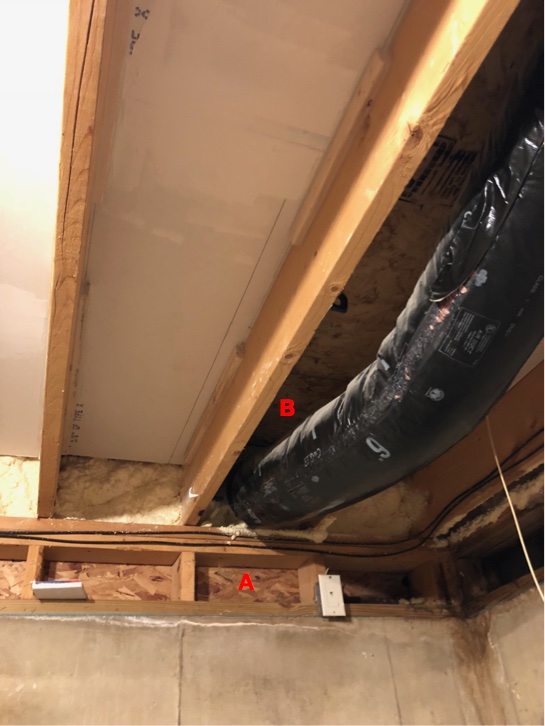
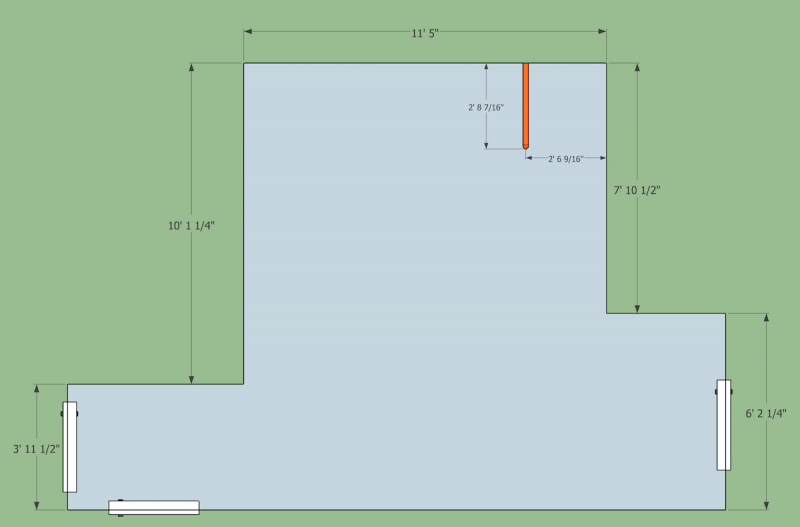











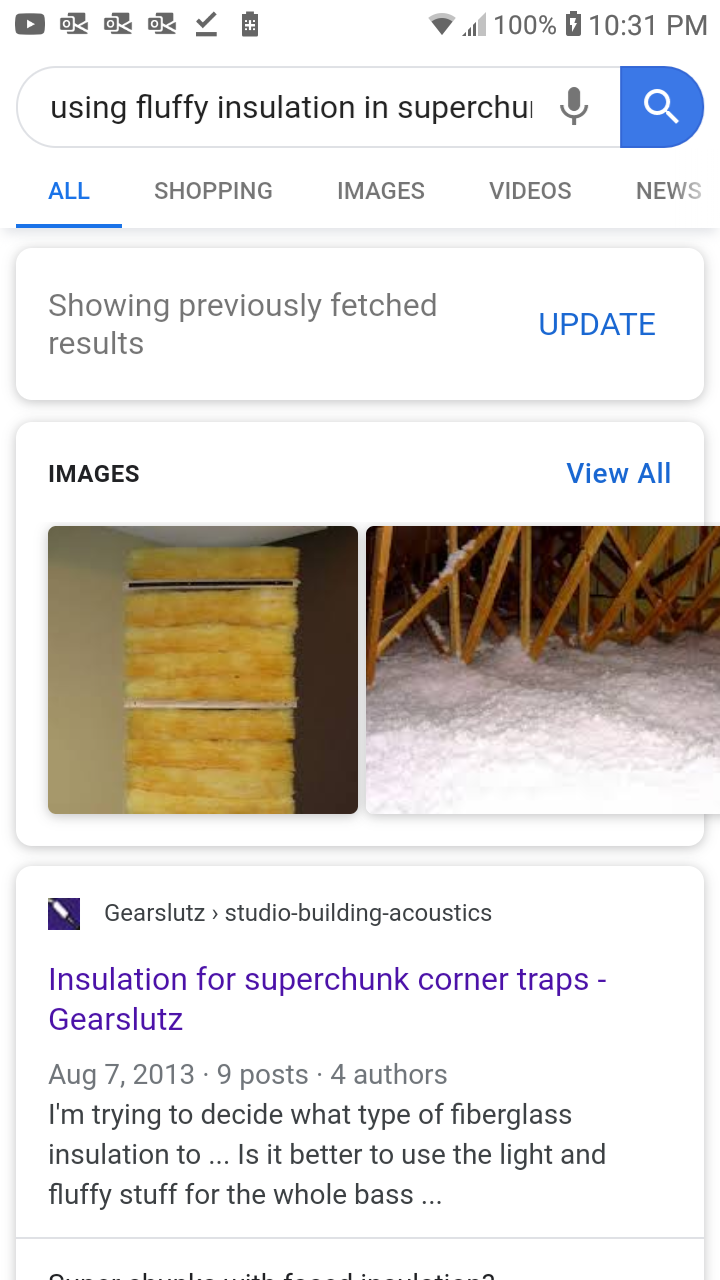
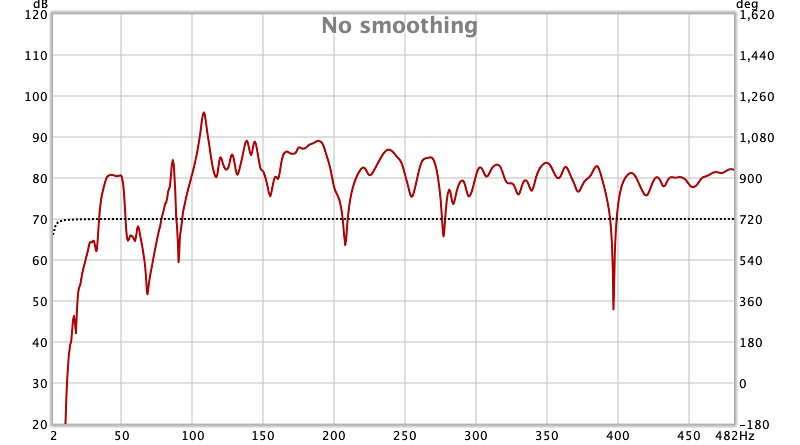
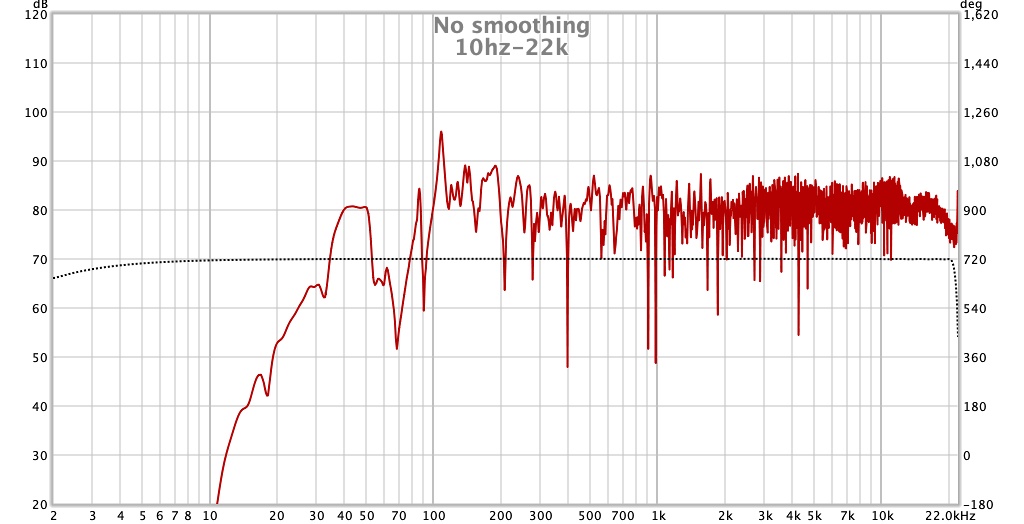
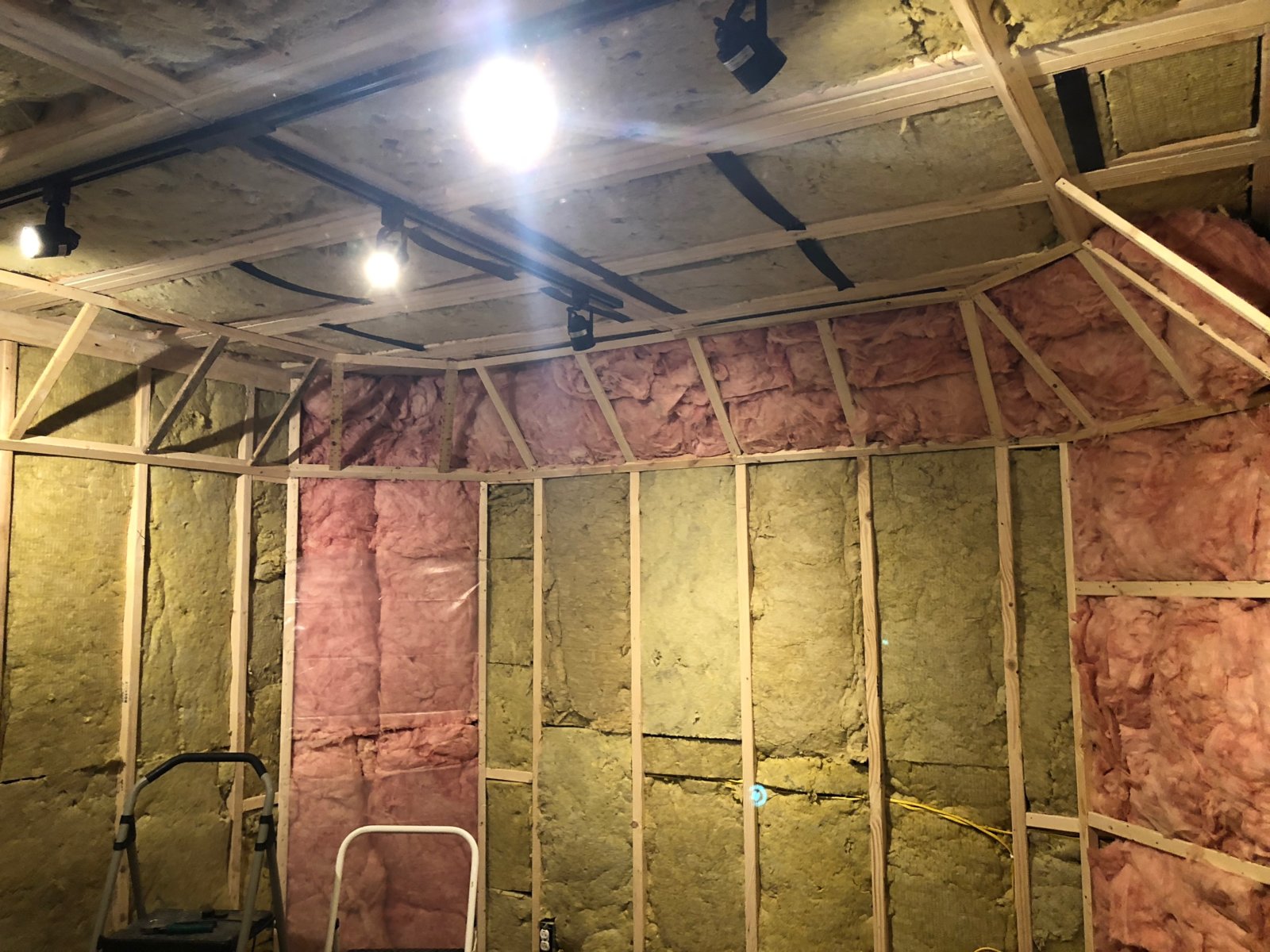
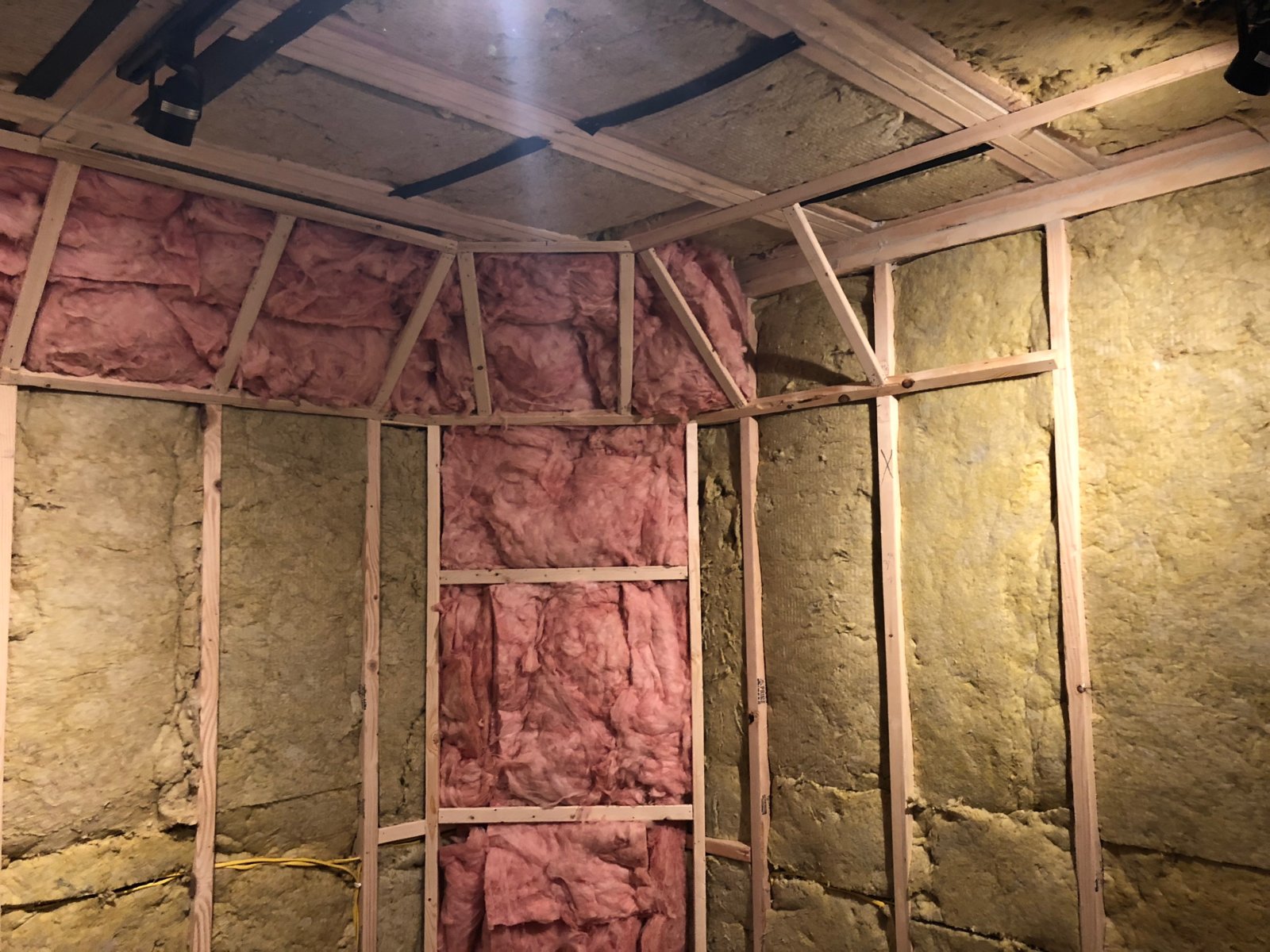
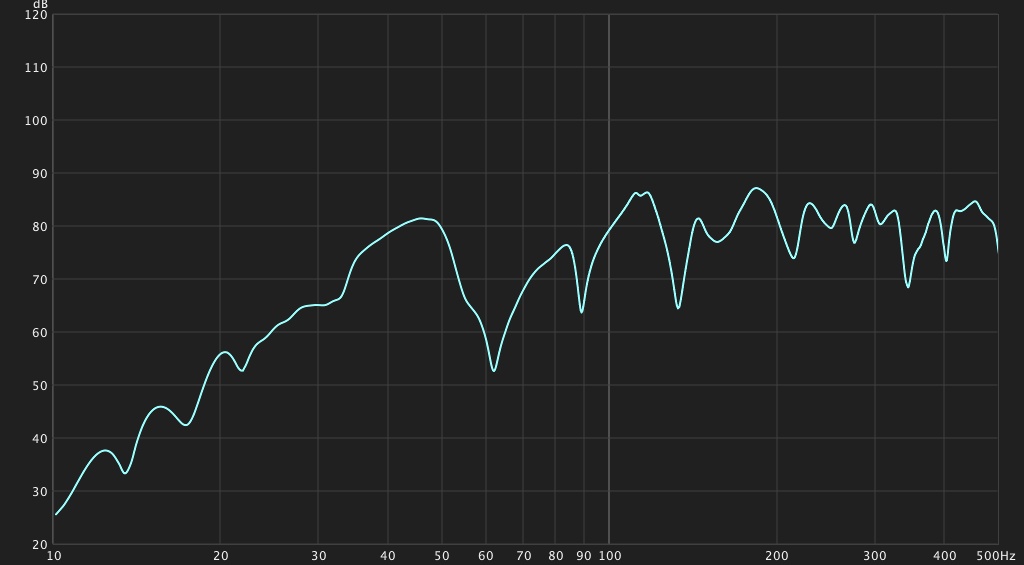
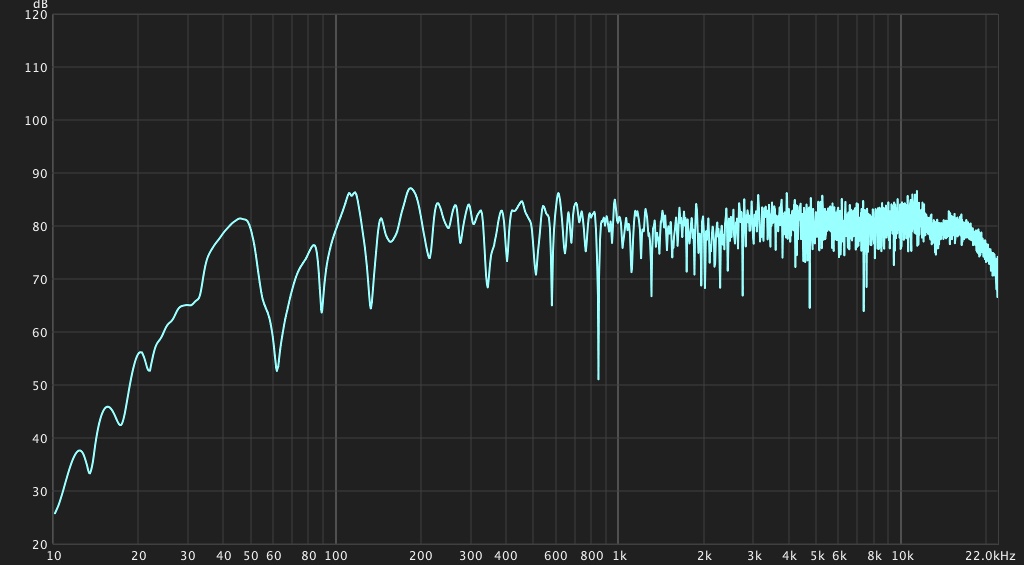
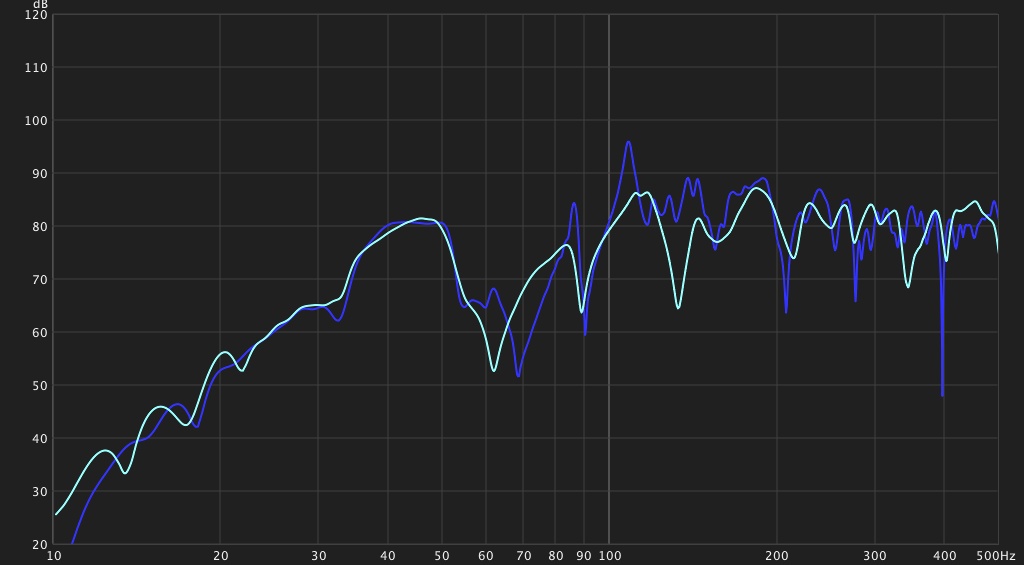
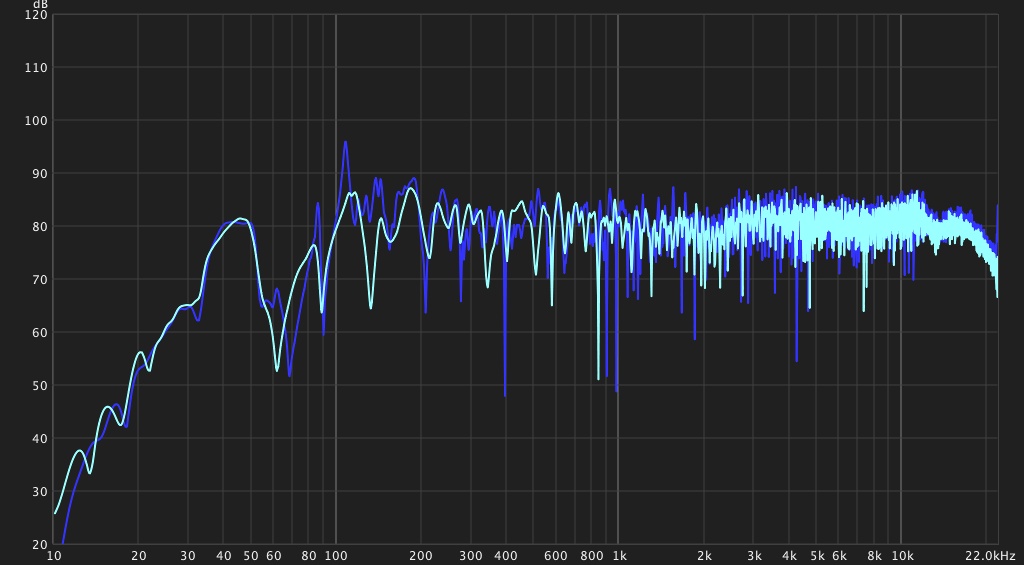
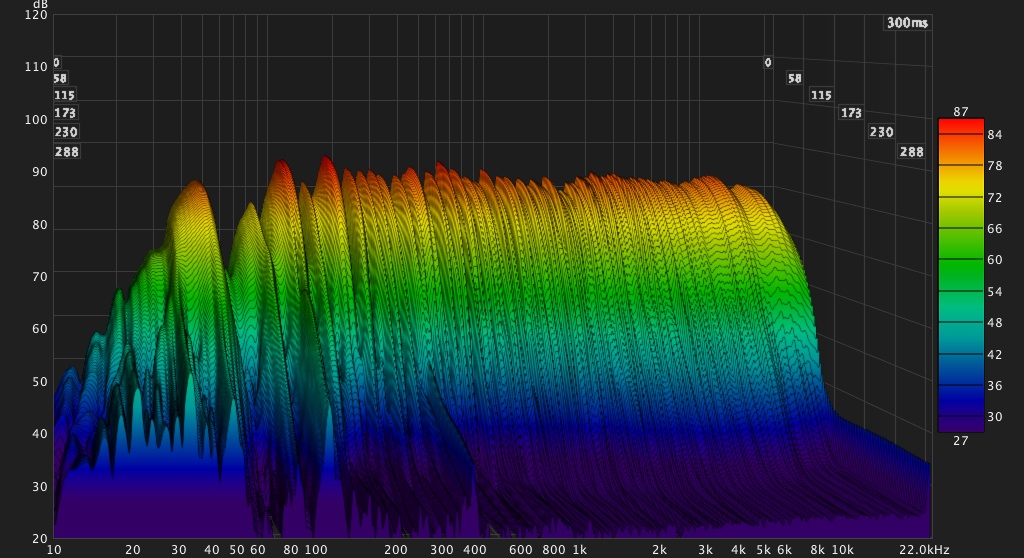
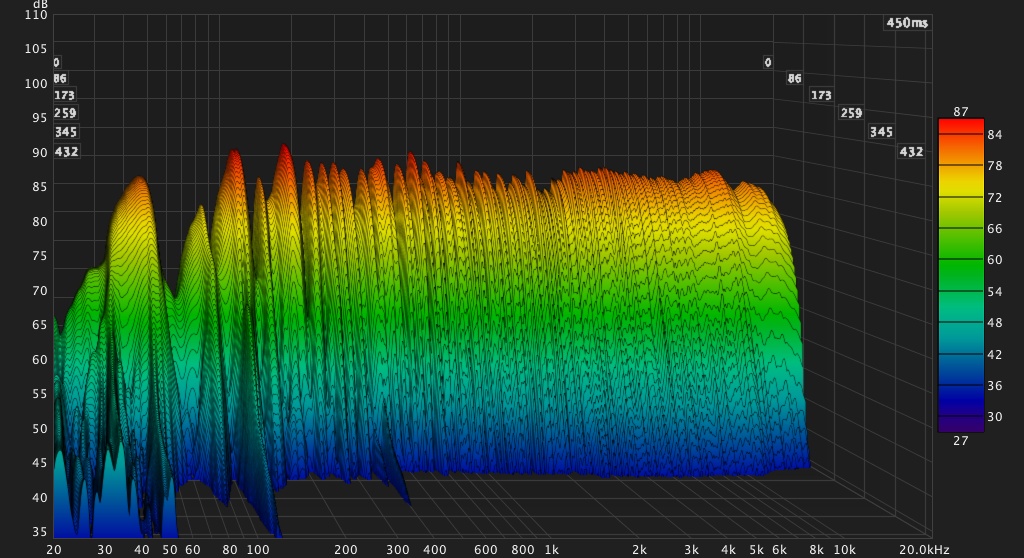
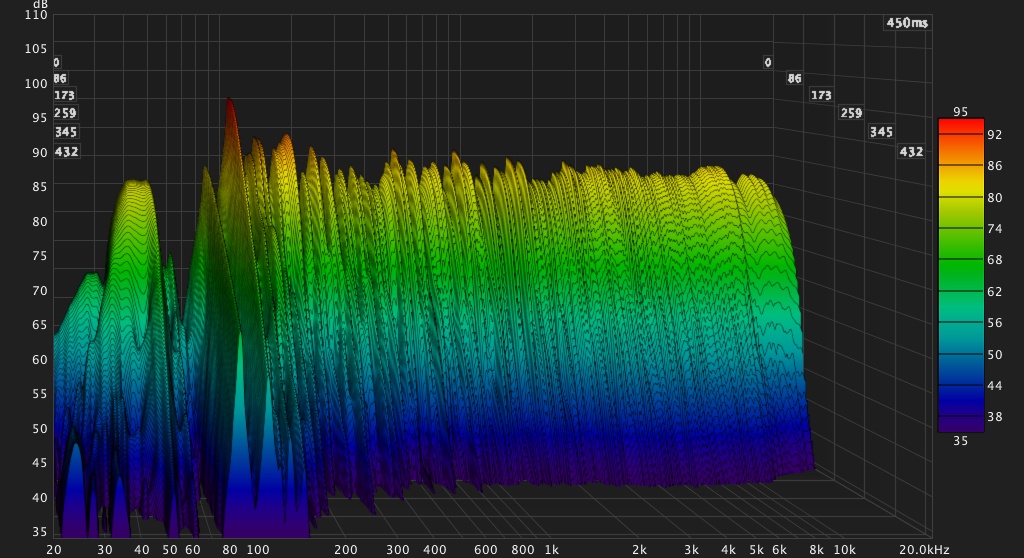




pcrecord, post: 461505, member: 46460 wrote: We'd all want the b
Yep! It would be great to have a nice big drum room, but we try to make the best of what we have to work with! :)
And then we let technology fill in the rest!